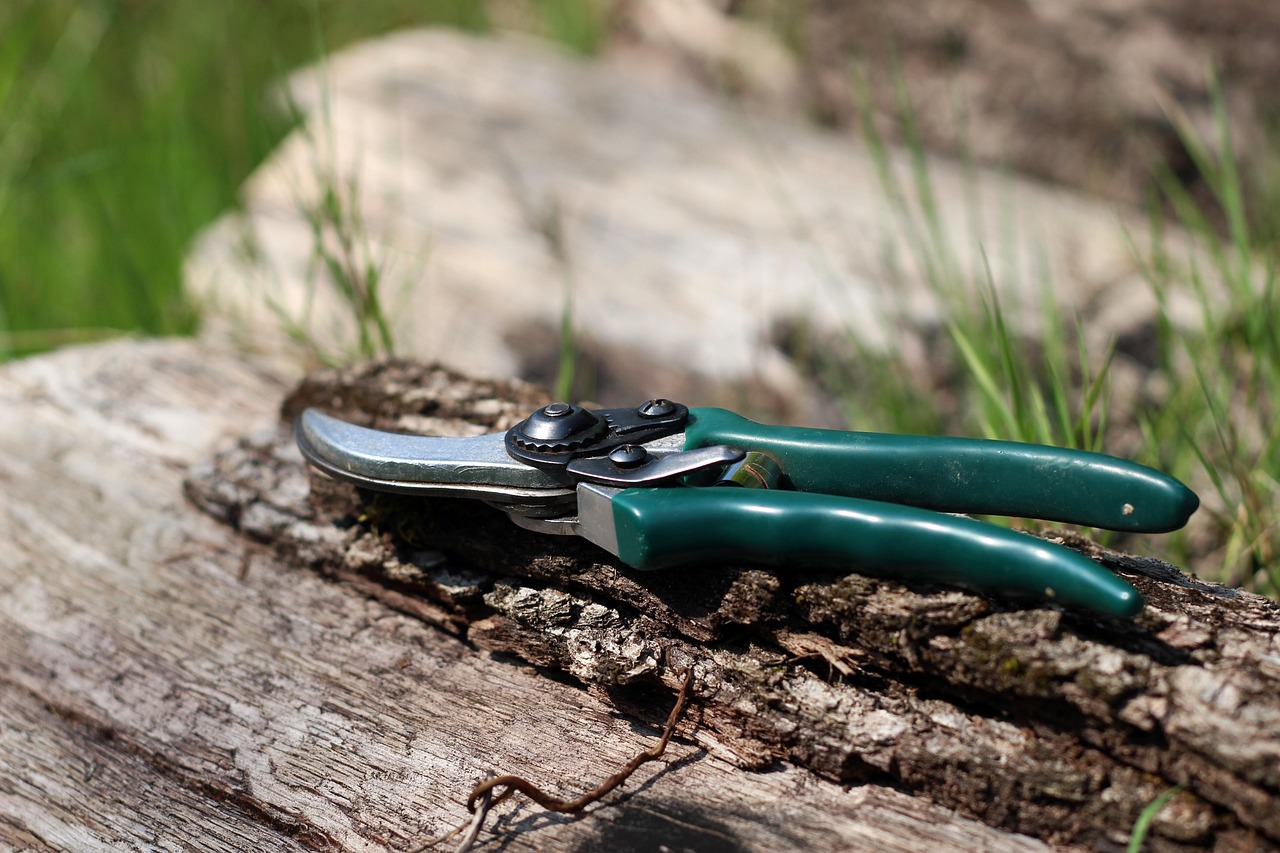Pruning techniques play a crucial role in enhancing fig fruit development. By carefully trimming branches and maintaining plant health, one can improve fruit yield, size, and overall quality.
Fig trees, known for their delicious fruits and unique growing habits, require specific care to thrive. Pruning is a significant aspect of fig tree maintenance that can lead to better fruiting and healthier trees. Understanding the right techniques and timing for pruning can make a substantial difference in the development of fig fruit. This practice not only encourages fruit production but also helps manage the tree’s size and shape.

Fig trees can be grown in various climates, but they flourish best in warm, temperate regions. They are relatively low-maintenance compared to other fruit trees; however, proper pruning is essential for optimal growth. Fig trees can produce fruit on both new and old wood, making it important to understand how to approach pruning to maximize yields.
Understanding Fig Tree Growth
Fig trees exhibit a unique growth pattern that influences how and when they should be pruned. Here are some key characteristics to consider:
- Fig trees can grow quite large if left unpruned, often reaching heights of 10 to 30 feet.
- They produce two crops each year: the breba crop from last year’s growth and the main crop from current season’s growth.
- The tree tends to have a bushy appearance if not regularly pruned, which can hinder sunlight penetration and air circulation.
These characteristics highlight the importance of strategic pruning. Without proper care, fig trees may develop dense foliage that limits fruit production. Additionally, overcrowding of branches can lead to increased susceptibility to pests and diseases.

Benefits of Pruning Fig Trees
Pruning offers several advantages that contribute to the overall health and productivity of fig trees. Some of the main benefits include:
- Improved Fruit Quality: By reducing excess foliage, more energy is directed toward fruit development, leading to larger and sweeter figs.
- Increased Airflow: Pruning enhances airflow through the tree canopy, which helps prevent diseases related to humidity and poor circulation.
- Better Sunlight Exposure: Thinning out branches allows sunlight to reach more parts of the tree, further boosting fruit production.
- Enhanced Tree Structure: Regular pruning helps maintain a balanced shape, making it easier to harvest fruit and manage the tree’s growth.
When to Prune Fig Trees
The timing of pruning is just as crucial as the technique itself. The best time to prune fig trees varies depending on the climate:
| Climate Type | Best Time for Pruning |
|---|---|
| Tropical | Year-round, with light pruning after harvest |
| Temperate | Late winter or early spring (before new growth begins) |
| Cold | Late winter while the tree is dormant |
In tropical climates, pruning can be done throughout the year to encourage continuous growth. In colder regions, awaiting late winter ensures minimal stress on the tree. It is important to avoid pruning during the active growing season as it can lead to sap loss and weaken the tree.

Essential Pruning Techniques
There are various pruning techniques that can be employed to optimize fig fruit development. Here are some recommended methods:
- Thinning: Remove crowded branches to improve airflow and sunlight exposure.
- Heading Back: Cut back branches to encourage bushier growth and increase fruit production.
- Crown Reduction: Shorten tall branches to control height and facilitate easier harvesting.
- Suckering: Remove suckers that grow from the base or roots to redirect energy towards fruit-bearing branches.
Employing these techniques will ensure that your fig tree remains healthy while producing abundant fruit. Each method has its own specific application depending on the tree’s growth pattern and health status.
By understanding how and when to prune fig trees effectively, gardeners can significantly enhance their fruit production while promoting overall tree health. The following sections will delve deeper into specific pruning strategies, tools needed, and tips for maintaining healthy fig trees throughout their life cycle.

Tools and Equipment for Pruning Fig Trees
Having the right tools is essential for effective pruning. Using proper equipment not only makes the task easier but also ensures clean cuts that promote faster healing for the tree. Here are some essential tools for pruning fig trees:
- Bypass Pruners: Ideal for cutting small branches, bypass pruners provide a clean cut and are easy to use.
- Loppers: These are used for thicker branches that are too large for hand pruners. They give you more leverage for cutting.
- Pruning Saw: A saw is necessary for larger branches. A sharp pruning saw with a curved blade is often preferred for its efficiency.
- Gloves: Protect your hands from sharp thorns and rough tree bark while pruning.
- Cleaning Solution: To prevent the spread of disease, it is important to disinfect your tools between cuts, especially if you notice any signs of disease.
Before starting the pruning process, ensure all tools are clean and sharp. Dull tools can damage the tree and hinder its growth.
Pruning Techniques Step-by-Step
Now that you have the right tools, it is essential to understand the step-by-step process of pruning fig trees. Follow these guidelines to ensure effective pruning:
- Assess the Tree: Begin by inspecting the tree for any dead or diseased branches. Identify areas that require thinning or shaping.
- Remove Dead or Diseased Wood: Start by cutting away any dead, damaged, or diseased branches. This allows the tree to focus its energy on healthy growth.
- Thin Out Crowded Branches: Look for branches that cross each other or grow inward. Remove these to improve airflow and light penetration.
- Shorten Long Branches: Cut back overly long branches to encourage bushier growth and better fruit production. Aim for a length that maintains balance within the tree.
- Clean Up: After pruning, clean up any fallen debris to prevent pests and diseases from spreading.
This step-by-step process will guide you in maintaining a healthy fig tree that bears quality fruit. Regularly assessing your tree after each growing season will help you decide whether additional pruning is necessary.
Common Mistakes to Avoid When Pruning Fig Trees
While pruning can be beneficial, there are common mistakes that gardeners should avoid. Being aware of these pitfalls can help ensure successful pruning:
- Pruning at the Wrong Time: Avoid pruning during active growth periods. This can stress the tree and reduce fruit yield.
- Over-Pruning: Removing too many branches at once can shock the tree, leading to poor growth and fruiting.
- Ignoring Tree Structure: Failing to consider the natural shape of the tree can result in an unbalanced appearance and hinder fruit production.
- Poor Cutting Technique: Making jagged cuts instead of clean ones can cause damage and increase the risk of disease.
Avoiding these mistakes will help maintain the health of your fig tree and enhance its fruiting capabilities. Taking your time during the pruning process ensures that you make thoughtful cuts that benefit the tree’s overall structure.
The Role of Mulching After Pruning
After completing the pruning process, mulching can play a significant role in promoting healthy growth. Mulch serves several purposes:
- Moisture Retention: Mulch helps retain soil moisture, which is crucial for fig trees, especially during dry spells.
- Weed Suppression: A good layer of mulch prevents weeds from competing with your fig tree for nutrients.
- Nutrient Enrichment: As organic mulch breaks down, it adds nutrients back into the soil, benefiting the tree over time.
The best types of mulch for fig trees include wood chips, straw, or shredded leaves. Apply a layer of 2 to 4 inches around the base of the tree, ensuring it does not touch the trunk to avoid rot.
Monitoring Fig Tree Health Post-Pruning
After pruning and mulching, it is essential to monitor your fig tree’s health closely. Watch for signs of stress or disease, such as:
- Browning or wilting leaves
- Pest infestations, including aphids or scale
- Mold or mildew on leaves or branches
If you notice any issues, addressing them promptly will help maintain your fig tree’s health and productivity. Regular checks will allow you to catch potential problems early and take corrective action as needed.
By equipping yourself with knowledge about tools, techniques, and post-pruning care, you can ensure your fig trees thrive and produce delicious fruit for years to come. In the next section, we will explore advanced techniques and tips for maximizing fig fruit development.
Advanced Pruning Techniques for Maximum Fig Production
Once you have mastered the basics of pruning fig trees, you can explore advanced techniques to further enhance fruit development. These methods are designed for experienced gardeners who wish to maximize their fig yields and improve the overall health of their trees.
Espalier Techniques
Espaliering is a technique that involves training a fig tree to grow flat against a wall or trellis. This method not only saves space but also enhances sunlight exposure and air circulation. Here are the steps to espalier a fig tree:
- Select a Suitable Location: Choose a sunny wall or fence that receives at least six hours of sunlight daily.
- Choose Your Main Leader: Select one or two strong shoots to serve as the main leaders. These will form the framework of your espalier.
- Secure the Leaders: Use ties or wire to secure the leaders horizontally along the support structure. Train them to grow along the desired pattern, typically in a horizontal line.
- Regular Pruning: As new shoots develop, keep them pruned to maintain the shape and encourage fruit production along the framework.
This technique not only creates an attractive landscape feature but also allows for easier harvesting and better fruit quality.
Coppicing for Healthier Growth
Coppicing is a pruning method where a tree is cut back to ground level or just above ground level. This technique can rejuvenate older fig trees that are no longer producing well. Here’s how to implement coppicing:
- Timing: Perform coppicing during the dormant season, typically in late winter or early spring.
- Cut Back: Cut the tree down to about 6 to 12 inches above ground level. This will encourage new, vigorous shoots to emerge.
- Thin New Growth: As new shoots develop, thin them out to ensure that they have enough space for optimal growth.
Coppicing can help restore vitality to your fig tree and may lead to an increase in fruit production in subsequent years.
Understanding Fruit Development Stages
To effectively prune for better fruit development, it’s crucial to understand the different stages of fig fruit development. Fig trees typically go through several stages throughout the growing season:
| Stage | Description | Pruning Focus |
|---|---|---|
| Budding | New buds begin to form on branches. | Remove any competing buds to ensure energy is directed toward stronger ones. |
| Flowering | Flowers develop within the figs. | Avoid heavy pruning during this stage to prevent loss of potential fruit. |
| Fruit Set | The tiny figs begin to swell after pollination. | Thin excess fruit if there are too many developing on one branch. |
| Maturation | Fruits grow larger and change color as they ripen. | Monitor tree health; avoid any major pruning that could stress the tree. |
Understanding these stages helps you know when it is appropriate to prune and what specific actions will benefit your fig tree at each point in its growing cycle.
The Importance of Fertilization Post-Pruning
After pruning, proper fertilization is essential for your fig tree’s recovery and fruit production. Fertilization provides the necessary nutrients that may have been depleted during the previous growing season. Here are some tips for fertilizing your fig tree:
- Use Balanced Fertilizer: A balanced fertilizer with equal parts nitrogen, phosphorus, and potassium (N-P-K) is ideal for promoting overall health and fruiting.
- Timing: Apply fertilizer in early spring as new growth begins, ensuring the tree has adequate nutrients for the upcoming growing season.
- Follow Recommendations: Always follow package instructions regarding application rates based on your tree’s size and age.
The right fertilizer will support healthy growth and improve fruit quality in your fig trees.
Pest and Disease Management Strategies
Pests and diseases can severely impact fig trees if not managed properly. After pruning, it is essential to monitor for common pests and diseases that may affect fig trees:
- Aphids: Small insects that can weaken plants by sucking sap. Use insecticidal soap or neem oil for control.
- Scale Insects: These pests appear as small bumps on branches. They can be removed manually or treated with horticultural oil.
- Fig Rust: A fungal disease that causes leaves to yellow and drop. Improve air circulation through pruning and apply fungicides if necessary.
Regular monitoring and management of pests and diseases will ensure that your fig trees remain healthy and productive throughout their growing season.
By implementing these advanced techniques, understanding fruit development, ensuring proper fertilization, and managing pests and diseases, you can create an environment where your fig trees thrive and produce abundant, high-quality fruit. In the next section, we will discuss seasonal care practices that further support fig tree growth and development.
Seasonal Care Practices for Fig Trees
In addition to pruning, seasonal care practices play an essential role in the health and productivity of fig trees. Proper care throughout the year ensures that your trees remain vigorous and capable of producing abundant fruit. Here are some key seasonal practices to consider:
Spring Care
As fig trees emerge from dormancy, spring is a critical time for growth. Here are some practices to implement in spring:
- Fertilization: Apply a balanced fertilizer as new growth begins. This provides essential nutrients that support the development of foliage and fruit.
- Watering: Ensure adequate watering as the temperature rises. Fig trees prefer consistent moisture, especially when they begin to flower and set fruit.
- Pest Monitoring: Keep an eye out for early signs of pests such as aphids and scale insects. Early intervention can prevent significant infestations.
Summer Care
During the summer months, figs are developing fruit and require careful attention:
- Mulching: Maintain a layer of mulch around the base of the tree to retain moisture and suppress weeds. This is particularly important during hot, dry spells.
- Watering: Continue regular watering, especially during dry periods. Deep watering is preferable to encourage deep root growth.
- Fruit Thinning: If necessary, thin out excess fruit to prevent overcrowding on branches. This helps improve the size and quality of the remaining figs.
Autumn Care
As summer transitions to fall, fig trees prepare for dormancy. Here are some tasks to consider during autumn:
- Harvesting: Monitor your figs closely for ripeness. Harvest figs promptly to ensure the best flavor and prevent overripening or pest attraction.
- Pruning Preparation: Assess your tree after harvest to determine any necessary pruning that can be done in winter or early spring.
- Soil Testing: Consider testing your soil to determine nutrient levels. This can inform your fertilization strategy for the following spring.
Winter Care
In colder climates, fig trees may require additional protection during winter:
- Winter Protection: If you live in a region with harsh winters, consider wrapping the trunk with burlap or using frost cloths to protect the tree from extreme temperatures.
- Pruning: Perform any necessary pruning while the tree is dormant. This will promote healthy growth when spring arrives.
- Pest Control: Inspect for any overwintering pests and address them as needed before they become a problem in spring.
Final Thoughts
Pruning techniques are vital for fostering better fig fruit development. Understanding the nuances of fig tree care—from basic pruning strategies to advanced methods—enables gardeners to cultivate healthy trees that produce high-quality fruit. Seasonal care practices complement pruning efforts, ensuring that fig trees receive adequate nutrients, water, and protection throughout the year.
By employing proper pruning techniques, monitoring tree health, and managing pests and diseases effectively, you can create an optimal environment for your fig trees. Remember that patience and attention to detail are key components of successful gardening. Each season brings unique opportunities for growth and improvement in your fig tree’s health and productivity.
The journey of nurturing fig trees is rewarding, not just for the fruit they produce but also for the beauty they bring to your garden. With dedication and knowledge, your efforts will yield delicious figs that can be enjoyed fresh or incorporated into various culinary dishes. Embrace the art of fig tree care, and enjoy the fruits of your labor!
